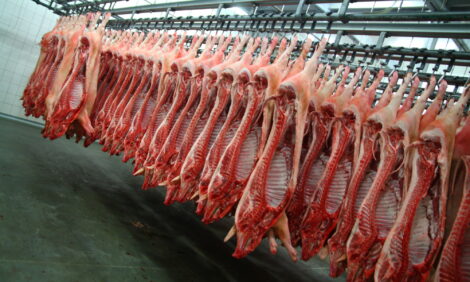



Housing of sows and gilts in Denmark
By Dr Eric van Heugten, Assistant Professor, North Carolina State University - Political pressure and consumer demands in Denmark during the 1990s led to new legislation requiring pregnant sows to be loose-housed, reported Niels-Peder Nielsen at the Banff (Canada) Pork Seminar in January 2003.
 Dr Eric van Heugten
Dr Eric van HeugtenSwine Nutrition Specialist North Carolina State University |
The National Committee for Pig Production adapted its research activity to a more welfare-oriented direction, and its research organization, the Danish Applied Pig Research Scheme, initiated comparative studies of equipment, housing, and production systems.
Thus, on January 1, 1999, a new act to regulate the housing of gestating sows went into effect in Denmark. It required that:
- Sows and gilts must be housed in groups from four weeks after service until seven days before expected farrowing.
- Minimum space requirements depend on group size and are as follows:
< 4 sows 30.1 ft² per sow 5 to 10 sows 23.7 ft² per sow 11 to 20 sows 21.5 ft² per sow > 20 sows 19.4 ft² per sow
- At least 14 ft2 of the pen space per sow and 10.2 ft2
- A cooling system, such as a sprinkler systems, must be installed to allow animals to adjust their body temperature.
These rules were to be implemented on all new or remodeled gestation housing by January, 1, 1999, and all gestation housing must meet these rules by January 1, 2012. An EU commission has agreed to provide stricter animal welfare legislation, similar to the Danish regulations, for all its member states and required gestating sows to be group-housed effective January 1, 2003.
Although the regulation in Denmark has been in effect only a few year, Nielsen points out that studies evaluating group-housing systems for sows had been initiated well before this legislation came to pass. In the early 1990s, Danish producers focused on simple group- housing systems. Sows were kept in static groups and either floor-fed using a pellet or meal diet or liquid-fed in a trough. This system is relatively cheap and requires low technical inputs and support. Production performance using this group-housing system is presented in table 1.

Results indicate that sows housed in groups had, overall, 0.3 live pigs per litter fewer than those housed in stalls. In addition, the study indicated that 15 percent of the sows housed in groups had to be removed form the study due to poor body condition, leg problems, and failure to return to estrus. This system did not appear to be effective because of problems in controlling feed intake and body condition. In addition, aggression was relatively high, resulting in high culling rates.
Electronic sow-feeding systems provide an opportunity to control individual sow feed intake and may allow successful housing of pregnant sows in groups. The Danish Applied Pig Research Scheme has conducted several trials using relatively new versions of electronic sow-feeding systems, compared to several traditional confinement systems (Table 2).

Results indicated that productivity was lower with group housing in on of the herds and that a large number of sows had to be removed form group-housing systems due to fear of the feeder, leg problems, and abortions. The deep litter system appeared to provide more opportunity for sows to escape from aggressive encounters that the slotted system. A transition period of 1 to 1.5 years may be needed for adjustment of the herd and management to group housing. During this period, production performance may be reduced and culling rate may increase.
Based on their experience with electronic sow-feeding systems, the Danish Applied Pig Research Scheme provides the following recommendations:
- Pen design should incorporate a separate lying area and a separate dunging area
- The lying area should provide sufficient space for sows to escape aggressive encounters.
- Straw must be provided in the lying area.
- The solid lying area should be 11.8 to 14.0 ft2.
- The dunging area may be slatted, should be at least 9.8 ft2 wide, and should be separate from the lying area.
- The system should include a training pen for new animals.
- One feeder should serve a maximum of 50 to 60 sows.
- Feeders should not be placed in corners, but should be accessible from both sides.
- A manufacturer of a a well-known electronic sow feeder should be chosen who can provide 24-hour service.
- Gilts should not be mixed with sows.
Nielsen concludes that in 2003 about half of the gestating sows in Denmark will be group- housed and that it is possible to be highly efficient using these systems. However, a number of unresolved issues still need to be addressed, and therefore, these systems will require continued development in order for them to show improved production and labor efficiency.
Printable version
Click Here for a Printable PDF version of this articleSource: North Carolina State University Swine Extension - April 2003









